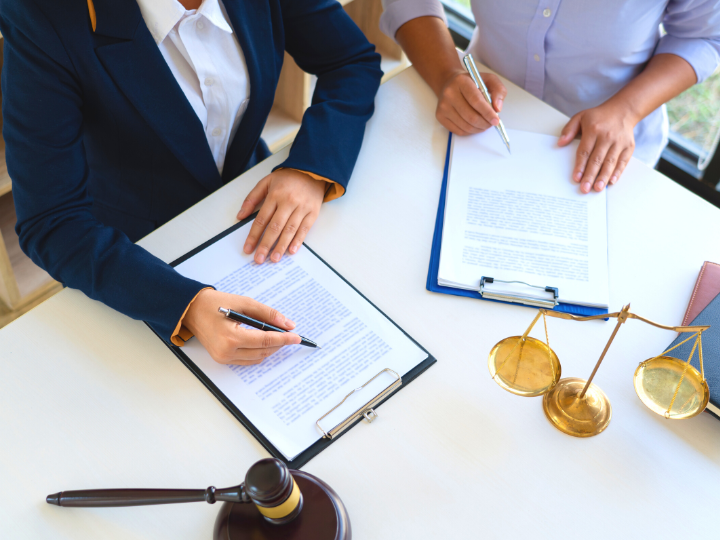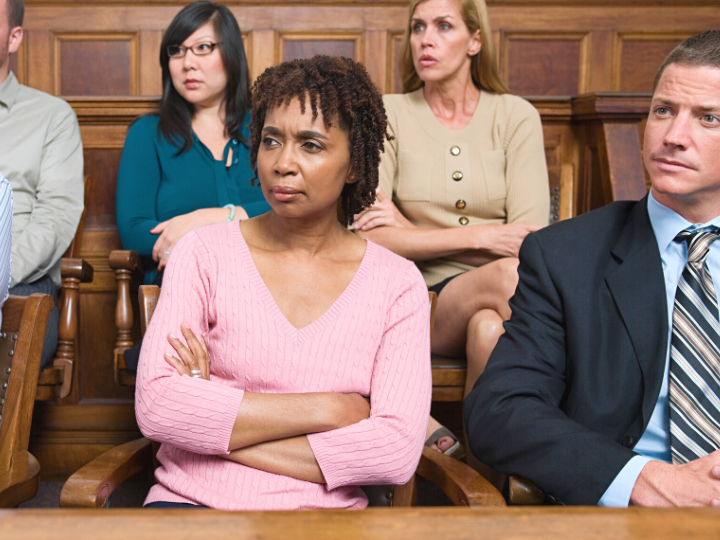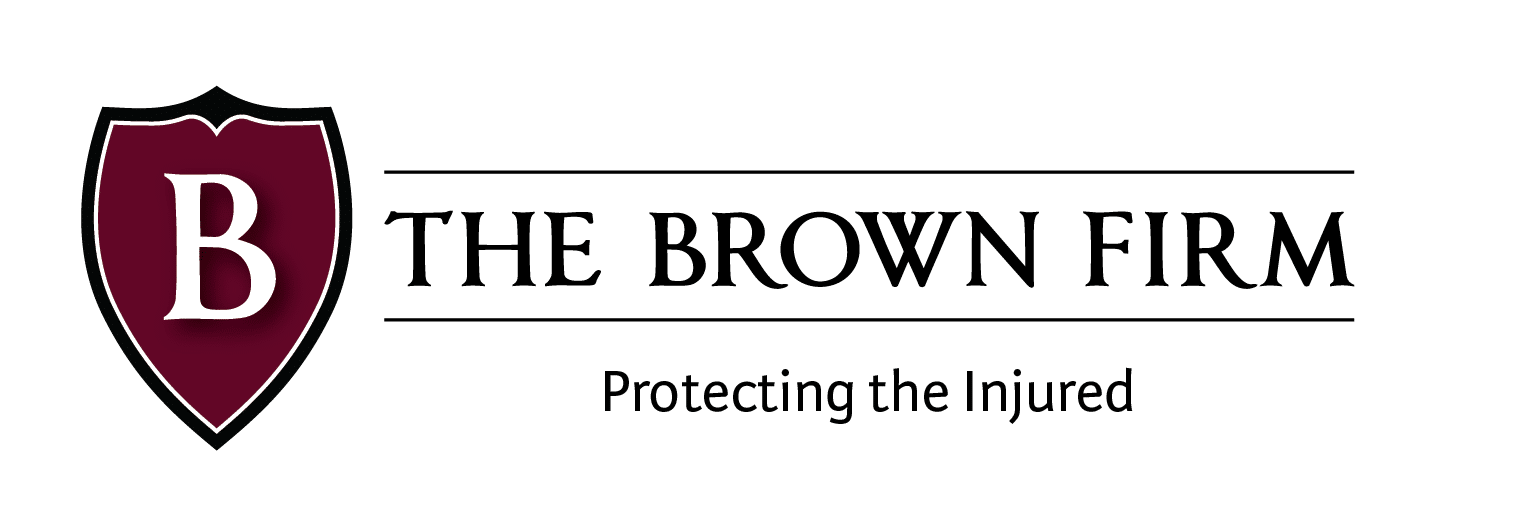The Journey of a Personal Injury Case
Several Steps Must Occur Between Getting Hurt and Wrapping Up a Personal Injury Case.
Here’s What To Expect.
Step 1: Intake
You’ve contacted The Brown Firm, and your personal injury case officially begins.
When you call The Brown Firm, an intake specialist will document your accident details and contact information. But what happens during intake, and what questions are asked?
Our intake specialist will need your full name, address, phone number, email address, and date of birth.
They will then do a detailed case assessment of your personal injury accident. If you have a police report, accident photos, photos of your injuries, or any medical records, our intake specialist will ask that you email or text those documents to them.
They will also ask that you send a photo of a state-issued ID, passport, or other official identification.
If you decide it’s in your best interest to work with an attorney, our intake specialist will put you in touch with one of our personal injury attorneys. They will thoroughly review your case and discuss the claims process with you.
Your attorney will also send you an official contract with a medical release and a statement of client rights.

Step 2: Investigation
Gather materials, contacts, and other information to build a strong case.
Once you’ve completed intake, the personal injury case investigation can begin.
If you did not have your case evidence ready during the intake process, your attorney would go over how to obtain information like police reports and medical records. You want to have as much evidence related to the accident as possible, like witness statements, accident photographs, insurance information of the involved parties, medical records, and police reports.
Eyewitnesses to the accident will be contacted. Your lawyer may also work with accident reconstructionists to better understand the facts of your case.
Once the investigation is complete, your lawyer will inform your insurance company and the at-fault party’s insurance company of their findings. A personal injury case investigation aims to prove liability and damages that the at-fault party caused so that a fair settlement can be reached.
Step 3: Demand
Send an official demand to the insurance company.
Once your injury attorney has collected all necessary evidence, the next step is to send a demand letter to the at-fault party.
A demand letter formally outlines your case, including liability and damages. It formally demands payment and allows the recipient to know the seriousness of the matter.
The letter clearly states relevant facts of the case and describes the other party’s fault, utilizing evidence found in the investigative phase to support the claims.
A demand letter is used to settle an issue quickly and amicably, allowing the two parties to resolve the issue without going to court.
The opposing party and their lawyers (usually the insurance company’s legal team) will review the letter and either accept the demand, reject the demand, or make a counteroffer.
The demand letter will include:
- Medical costs
- Anticipated future medical costs
- Proof of past and expected lost income
- Relevant photos and other documents
Step 4: Offer to Settle
Insurance company likely responds with a lowball settlement offer.
At this point, the insurance company will either accept the offer or make a counteroffer.
Don’t be surprised if the insurance company rejects your offer and returns with a lowball offer. Remember that insurance companies are for-profit businesses, and they save money by paying out as little as possible.
If the offer is too low, your attorney will refuse the offer and make a counteroffer.
Step 5: Negotiations
Offers and counteroffers with the insurance company.
During negotiations, you should expect a few rounds of offers and counteroffers with the insurance company.
Your initial demand letter will likely request a relatively high amount since you can expect the insurance adjuster to respond with a counteroffer. Eventually, the two sides will agree on a settlement amount, or the case will have to proceed to mediation or trial.
Disputes that arise between parties during settlement negotiations often relate to the scope of the insurance coverage provided by the policy. The insurance company may enforce its terms more narrowly. That’s why an attorney is invaluable to this part of the process.

Step 6a: Case Doesn’t Settle
Negotiations break down.
Sometimes negotiations break down, but that doesn’t mean you have to accept a lowball offer.
There are many reasons a case may not settle. Sometimes a defendant won’t offer a settlement at all, so you have no choice but to go to court to recover compensation.
More often, a defendant will offer a settlement, but it won’t be enough to cover all your damages.
And when punitive damages, damages filed to punish the defendant for outrageous conduct and deter them and others from engaging in similar conduct, are at stake, your lawyer might encourage you to go to trial because the awards can sometimes be significantly larger.
Step 6b: Case Settles
The insurance company agrees to a reasonable settlement amount.
In a perfect world, your case settles with little to no pushback from the insurance company.
There will likely be a little back and forth in negotiations, but ultimately your lawyer gets the fair compensation you deserve.
If you’re lucky enough to settle early, go ahead and Skip to Step 13 — getting your money.
Step 7: Lawsuit
File a lawsuit to make the case a civil court matter.
If you can’t settle outside of court, you must file a personal injury lawsuit.
Your personal injury lawsuit will begin by filing a set of documents with the court and serving those papers to the defendant.
To begin, your attorney will prepare and file a complaint identifying the legal and factual basis for your personal injury lawsuit. The document will explain the relief you’re seeking, including the amount of money you’re demanding from the defendant.
Once the complaint and summons is filed with the court, your attorney will serve a copy to the defendant.
Step 8: Discovery
Involved parties further investigate each other’s claims and justifications.
Once your claim is filed, the pre-trial phase known as “discovery” begins. This is when both parties “discover” the relevant details of the case.
You and your lawyer will discover how the defendant describes the accident, and the defendant will learn your side of the story.
In discovery, testimony is given, evidence is compiled, witnesses are interviewed, documents are shared, and so on. It is illegal to withhold evidence from the other party, so everything will be available for both sides to see.
If the evidence revealed in discovery against the at-fault party is overwhelming, the insurance company may agree to settle before going in front of a jury.
Step 9: Mediation
A neutral third party joins to guide negotiations toward the next step.
Mediation is a process where each side in a lawsuit agrees to use a neutral third party to try and resolve a claim before going to trial.
Mediation is sometimes voluntary between two parties, but it can also be mandatory before a judge allows a case to go to trial. Mediation is often an excellent tool to resolve claims without the risk, expense, and energy required to go to trial.
Sometimes insurance companies use mediation to discourage injured victims from seeking full damages for their losses. That’s why it’s important to have an experienced personal injury attorney on your side.
But even if an agreement is not reached, mediation will tell you what the defense will focus on at trial.

Step 10a: Case Doesn’t Settle
You have to go to trial.
Sometimes mediation doesn’t end in agreement, and you must go to trial. It’s not that common, but something to be prepared for.
If your lawyer doesn’t settle in mediation, they will take what they learned about the defense during mediation and use it to prepare for the trial.
Step 10b: Case Settles
Mediation is successful and you reach a settlement agreement.
Your case was finally settled in mediation! More often than not, this is the last step for most accident victims.
If this is your outcome, Skip to Step 13.
Step 11: Trial
Negotiations are over, and the decision is left to a judge or jury.
Only about 4-5% of personal injury lawsuits make it to the trial stage. But if your case goes to trial, there are several different stages it will go through.
First, there will be a pre-trial conference with the judge, attorneys, and both parties. The conference will clarify and simplify matters before the trial begins.
Next is the jury selection. Sometimes the plaintiffs can opt for a bench/judge trial without a jury. When the jury is selected, the trial will begin with both sides presenting their case.
Once both sides have “rested” and have presented all witnesses and evidence to the jury, there will be closing arguments. This is where both lawyers summarize the case and make a final appeal to the jury.
Finally, the judge will give final instructions to the jury, who will deliberate and come to a verdict.

Step 12a: Win
Congratulations! You and your personal injury attorney won your case.
After the trial, the jury will either rule in favor or against you. If they rule in your favor, your case is finally over, and you can look forward to collecting your compensation.
And even though it took much longer than an out-of-court settlement would have, a jury settlement is typically much larger.
Step 12a: Lose
This is always a possibility, even though your legal team worked hard to get justice.
Unfortunately, losing is always a possibility when you go to trial, even though your legal team worked hard to get justice.
More often than not, a personal injury attorney won’t go to trial if they think there is any chance they lose. But, it still happens from time to time.
Keep in mind that you may have the option to appeal.
Step 13: Settle Funds
Before the money is in your hands, a few more steps need completed.
You’ve won your trial, but you aren’t quite finished.
Before you can collect your compensation, a few loose ends need tying up, including:
- Settling liens you owe, such as medical and insurance liens
- Finalizing medical costs
- Finalizing legal expenses
Medical liens are held by health care providers and insurers who paid for medical treatment in connection with the accident.
Liens must be paid off before the plaintiff can receive anything from the settlement. Once the liens are settled, you will finalize the legal expenses with your attorney.
Step 14: Disburse and Close
Your case is closed.
Finally, you will get a check from your attorney.
Once you get the check, your case is closed. The final amount will have the attorney’s pre-determined fees and your medical expenses taken out.
The Brown Firm is dedicated to protecting the injured, whether your case settles quickly or goes all the way to trial.
Download this information as a PDF!
Learn more when you call (800) 529-1441 or fill out the form below.
Learn About Our Personal Injury Practice Areas
Contact The Brown Firm
Get the Answers and Compensation You Deserve
You’ll notice the difference when you contact The Brown Firm! Our local dedicated attorneys want to help you recover and rebuild.
Schedule your free consultation by calling (800) 529-1441 or completing our simple online form.
